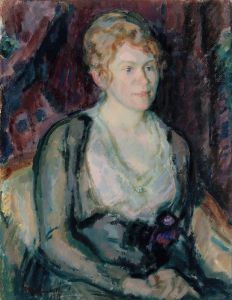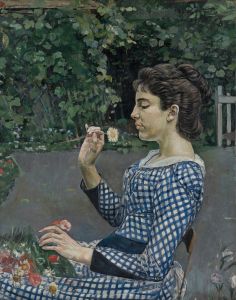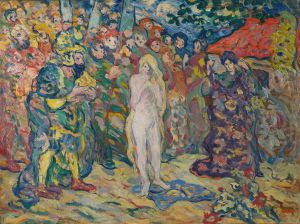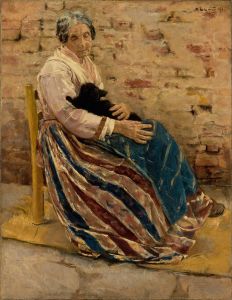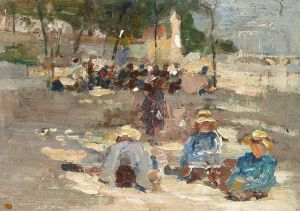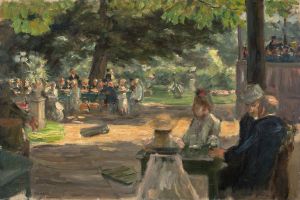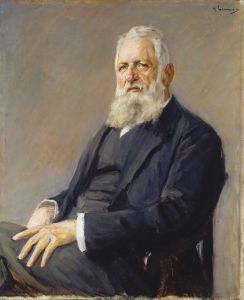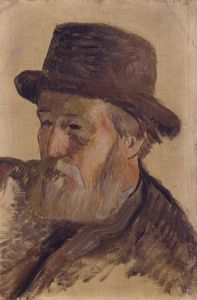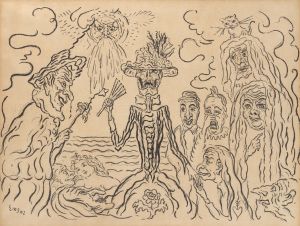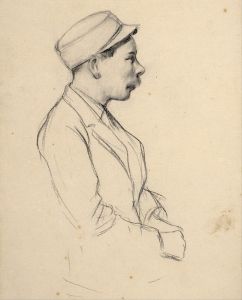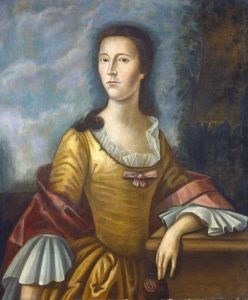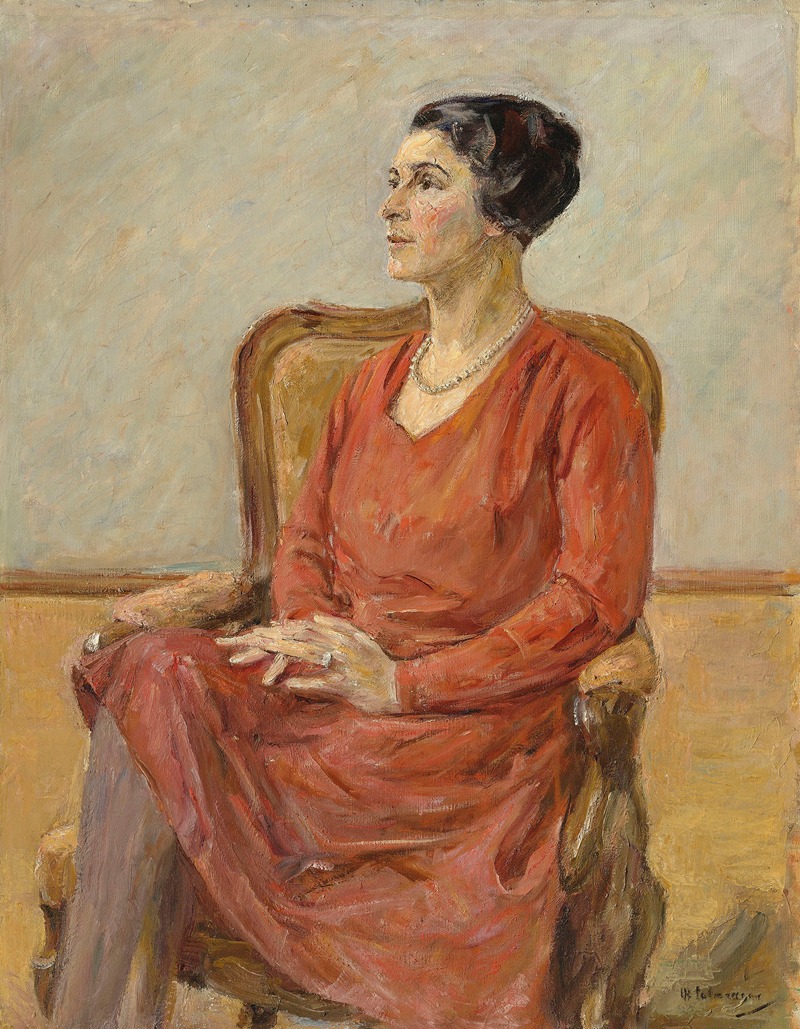
Bildnis Olga Neuberg
A hand-painted replica of Max Liebermann’s masterpiece Bildnis Olga Neuberg, meticulously crafted by professional artists to capture the true essence of the original. Each piece is created with museum-quality canvas and rare mineral pigments, carefully painted by experienced artists with delicate brushstrokes and rich, layered colors to perfectly recreate the texture of the original artwork. Unlike machine-printed reproductions, this hand-painted version brings the painting to life, infused with the artist’s emotions and skill in every stroke. Whether for personal collection or home decoration, it instantly elevates the artistic atmosphere of any space.
"Bildnis Olga Neuberg" is a portrait painting by the renowned German artist Max Liebermann, who was a leading figure in the German Impressionist movement. Liebermann, born in 1847 in Berlin, was known for his realistic and impressionistic style, which often depicted scenes of everyday life and portraits of notable individuals of his time.
The painting "Bildnis Olga Neuberg" is a testament to Liebermann's skill in portraiture, capturing the essence and character of the subject with his distinctive brushwork and use of light. Olga Neuberg, the subject of the painting, was a member of a prominent family, and her portrait reflects the social status and cultural milieu of the time. The exact date of the painting is not widely documented, but it is consistent with Liebermann's mature period, where he focused extensively on portraiture.
Liebermann's approach to portrait painting was influenced by his exposure to the works of the Dutch Old Masters, as well as his contemporaries in the Impressionist movement. His portraits are characterized by a keen observation of his subjects, capturing not only their physical likeness but also conveying a sense of their personality and social standing. In "Bildnis Olga Neuberg," Liebermann employs a subtle palette and loose brushstrokes, which are hallmarks of his style, to create a lifelike and engaging representation.
The painting is notable for its composition and the way Liebermann uses light to highlight the features of Olga Neuberg. The background is typically understated, drawing the viewer's attention to the subject herself. This technique is consistent with Liebermann's other works, where the focus is on the individual rather than the surroundings, allowing the personality of the subject to take center stage.
Max Liebermann was a pivotal figure in the Berlin Secession, an art movement that sought to break away from the traditional academic standards of the time. His work, including "Bildnis Olga Neuberg," reflects the ideals of this movement, emphasizing modernity, individuality, and a break from convention. Liebermann's portraits often include elements that suggest the inner life and thoughts of the subject, making them more than mere representations but rather insightful studies of character.
Throughout his career, Liebermann received numerous accolades and held prestigious positions, including serving as the president of the Prussian Academy of Arts. His contributions to art were significant, and his works remain influential, housed in major museums and collections worldwide.
"Bildnis Olga Neuberg" is a fine example of Liebermann's portraiture, showcasing his ability to blend realism with impressionistic elements to create a compelling image. The painting not only serves as a representation of Olga Neuberg but also as a reflection of the cultural and artistic context of early 20th-century Germany. Liebermann's legacy as a master portraitist is cemented through works like this, which continue to be appreciated for their artistic merit and historical significance.





